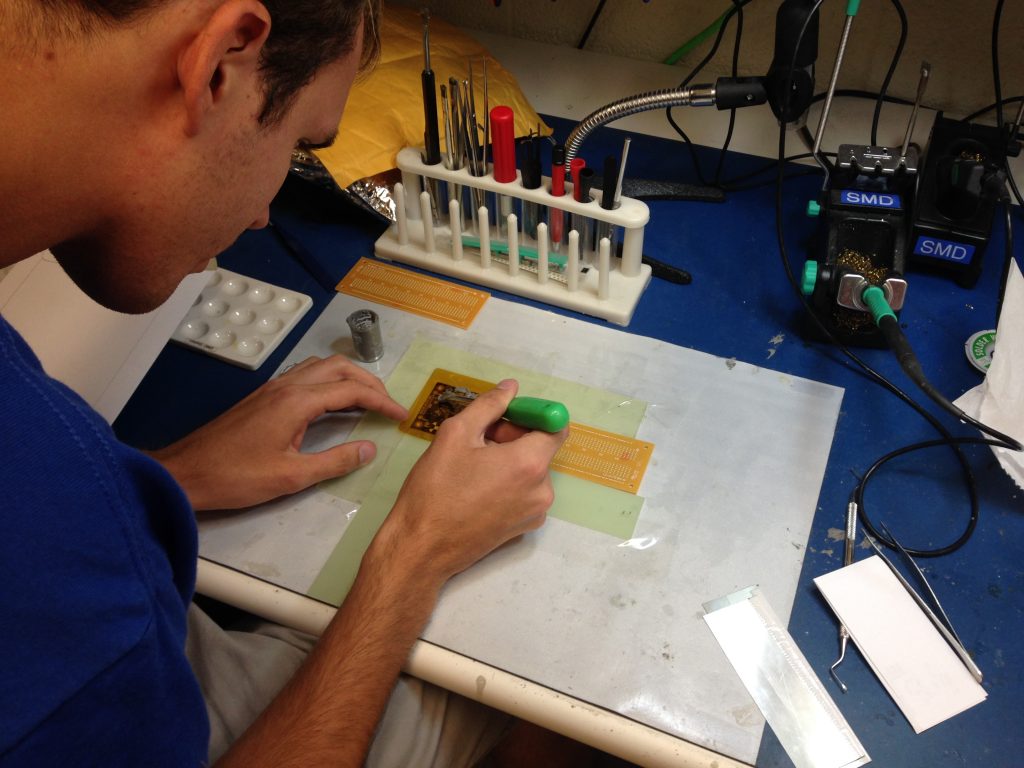
BYU mechanical engineering undergraduate Patrick Walton is leading a team of students to build a satellite for NASA.
Although hardware made by BYU students has flown in space before, this is the first satellite built entirely at BYU.
Walton’s passion for space developed when he was a child. Homeschooled for part of his life, Walton often went to the library to check out books on a variety of topics to enhance his education. He especially loved learning about Mars explorations searched the NASA website to learn more about space technology.
At BYU, Walton’s passion for space continued. He went to Dr. David Long, associate dean of BYU’s Ira A. Fulton College of Engineering and Mathematics, and convinced him to teach a course on CubeSats. (Passive Inspection CubeSats are small satellites launched off rockets for lower costs, according to NASA.)
NASA has a special grant program called the Undergraduate Student Instrumentation Project that funds undergraduate student teams at universities.
Walton and a team of professors and students refined an idea for a CubeSat during fall 2015, when they created a proposal for NASA funding.
After months of waiting, the team of BYU professors and students were accepted for funding two months ago.
“It’s been in progress, but it’s never been so official,” Walton said. “Now we have a launch.”
Long thinks Walton has various leadership skills that are useful to the project.
“He is a good, high-level system thinker,” Long said. “He can work the details but then he can also step back and do the big picture stuff. That’s really critical.”

While many students may not even know where to begin designing and building a satellite, Walton compares the satellite’s inner workings to cell phone technology.
Walton explained that a phone is made up of many different components in a tiny space. Similarly, a CubeSat has intricate details in a very small device. For example, these miniature satellites must generate power with solar panels, store power with batteries, control power through circuit boards, take pictures through cameras and transfer data to the ground through a radio, all in a 10-centimeter cube.
The team is building a pair of small satellites that can turn on in less than a second and take pictures at all angles.
Walton and his team need to have their two CubeSats completed and given to NASA by October 2017. NASA plans to launch them in December 2017.
This project required the crucial skills and abilities of various BYU undergraduate team members.
BYU grad student Luke Newmeyer is the team lead for the processing and power subsystems. Newmeyer sees himself making big progress as an engineer because of this project and the unique difficulties that accompany it.
“This mission is so tightly constrained,” Newmeyer said. “We’re so limited in size, weight and power.”
Walton’s brother and BYU junior Nick Walton is the outreach coordinator on the team. He views this project as beneficial not only for his future but also for his college experience.
“I think it is so great to involve yourself in something outside of classes,” Nick Walton said. “I feel like when I do so, I understand why I am learning what I am learning.”

Because of Patrick’s vision and unfailing diligence on this project, many undergraduate students are receiving invaluable experience that will impact their lives and the lives of many students to come, according to Nick.
“It is pretty amazing,” Nick said. “This whole thing has been his (Patrick’s) baby and him bootstrapping it. Students designed the CubeSat in a class, but they didn’t think they’d actually have a chance to build it. But Patrick had the faith.”




